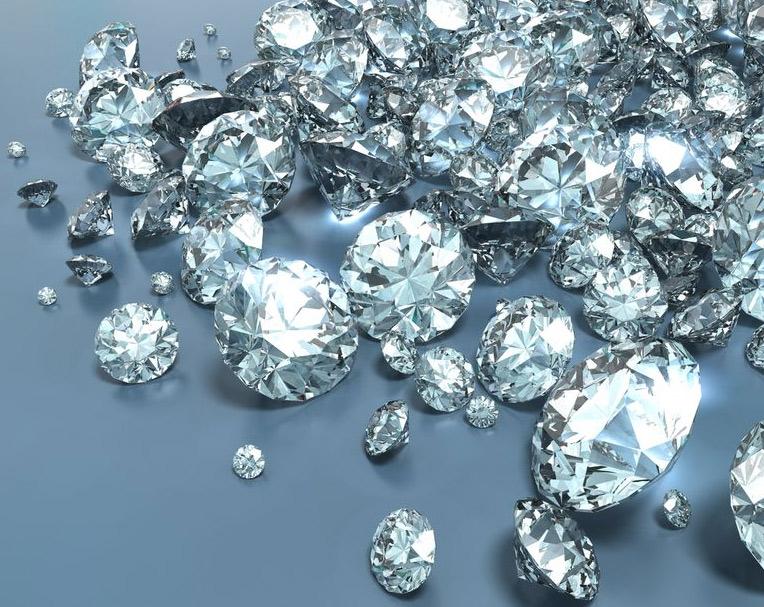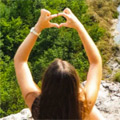How to Choose a Diamond - The 4 Cs of Diamonds
When choosing a diamond, you want something perfect that symbolises your love. A lot more thought goes into it than you would think because it's not just about the grade or the price tag.

Each diamond is different and naturally formed. Therefore, it has a variety of factors that make it unique and contribute to its beauty. When it comes to choosing that unique jewel, you want to examine each gem using the 4 Cs of diamonds. Understanding what each of these factors brings to the stone can help you on your way to finding the stone made just for you.
From the weight and shape to colour, clarity grade, and personal taste, many factors play a part in picking the correct stone. It's essential to consider these factors, especially if you are engagement ring shopping. Such a special occasion calls for the perfect stone, and these decisions are not something to take lightly.
You'll find any jeweller offers a wide variety of stones, along with ring styles and different cuts. As such, determining how to buy a diamond can be overwhelming. It's why we've created this ultimate guide on how to choose the perfect diamond. Following the 4 Cs will enable you to make an informed decision that you won't regret.
Choosing a Diamond
In the world of diamonds, experts examine each stone using the 4 Cs of diamonds. These four characteristics determine:
1. The cut - this is in reference to the shaping of your stone.
2. The carat - this feature refers to how much the stone weighs.
3. The colour - this refers to the shade. Diamonds come in a wide range of colours, including white, yellow, blue, etc.
4. The clarity - this refers to the number of flaws or inclusions.
Any reputable jeweller will have descriptions addressing each of these features, and if they don't, you're better off looking elsewhere.
So, without further ado, here is your shiny guide to the art of diamond picking.
The Cut
The cut can be the difference between exceptional quality and an otherwise average stone.
The cut ensures the shaping of a diamond to correct proportions. It keeps its natural symmetry intact and finishes the stone with a sublime polish. Ultimately, the cut maximises its brilliance and scattering of light and sparkle.
Cutting a diamond requires skilled and precise artisans. These diamond cutters use their expertise to study each stone before deciding what cut will suit it best.
The cut grades range from ‘Excellent’ to ‘Poor.’ Higher-end jewellers, such as Diamonds on Richmond Auckland, will only sell grades ranging from ‘Excellent’ or ‘Very good.’ You don't want to go for a jeweller that offers ‘poor’ grades, as it speaks to the lack of regard for their clients.
The cut grade indicates diamonds with proportions of either perfect or close to being so.
There are around ten cuts, which are variations of the round shape or the fancy shape. The ten cuts include:
1. Round brilliant
2. Oval
3. Emerald
4. Heart
5. Cushion
6. Princess
7. Radian
8. Marquise
9. Pear
10. Asscher
Most cuts - about 75% - are round because the shaping emphasises brightness. The oval and princess are the most popular of the fancy shapes.
The Carat
The best carat weight depends on a person's preference. It's also vital to note that the carat is not the size of the diamond. Instead, it is the standard measure used for the weight of the stone. In general, carats can range from .05 to 5 carats. If you want to find out your stone's value, the carat is a reliable indication of its worth. The higher the carat, the higher the value. However, that factor is not the only determiner of its worth. It's also vital to consider the cut grade, too. Two stones can have the same carat but a different value because of a deep or shallow cut, both of which influence the sparkle of the stone. These subtle distinctions mean you want to pick a stone that has both 1) a high-cut grade and 2) a substantial weight.
The Clarity
Most diamonds have birthmarks because they are naturally occurring stones formed deep within the earth. Each stone is unique, and its clarity speaks to the uniqueness and the types of ‘blemishes’ it holds.
If you want to purchase a flawless stone, they will be higher prices because of their rarity. The blemishes on these stones are not visible to the naked eye, meaning their clarity grade is high and has a more significant impact on its value and shine.
The GIA (Gemological Institute of America) has a grading scale to rate the clarity and quality of a diamond, the scale ranging from Flawless to Slightly Included and Included.
The Colour
The colour is the first thing you'll notice when looking at a stone. Various natural factors influence the colour when the stone forms. It is very rare to see completely colourless stones, just as rare as naturally coloured ones are. The colours are on a scale according to the GIA. D means colourless, with the scale going all the way down to Z, with the further down you go, the diamonds presenting yellow and brown tinges.
Diamonds on Richmond recommend picking from the selection of D-G colours, as these represent colourless ranges.
The Kimberly Process
The Kimberly Process is another aspect to consider in sorting how to buy a diamond and doing so ethically. The process is a multilateral trade agreement. Its commitment is to removing conflict diamonds from the supply chain, worldwide.
The Kimberly Process Certification Scheme assures its buyers that the rough stones in shipment are wholly legitimate and not used to finance wars.
Buy a Diamond Today
Buying a diamond requires care and research. You want to weigh all the 4 Cs of diamonds to ensure you get the perfect stone. For more information, get your diamond education from the Diamond Buying guide by Diamonds on Richmond. Diamonds on Richmond has over 12 years of experience in guiding their customers in their diamond process. They pride themselves in helping you find the perfect stone to fit all of your diamond needs.
Hits: 7394 | Leave a comment
























